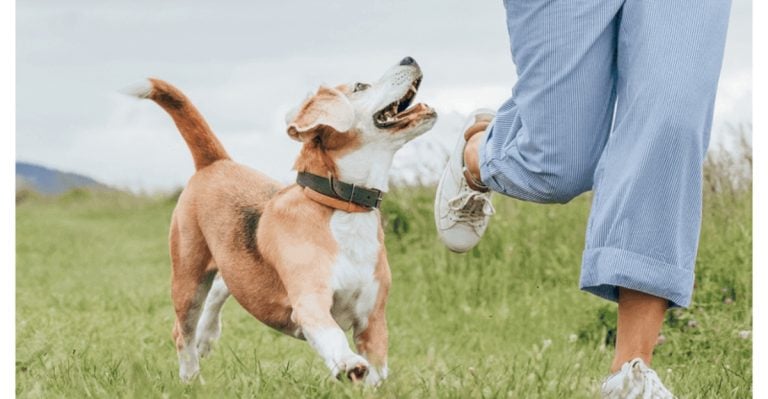15 Methods That Can Help Anxious Dogs Feel More At Ease

Is your dog chewing on the couch or barking at nothing again? When your dog acts out like this, it’s more than just mischief—it’s often a sign of anxiety. But don’t worry, there are plenty of solutions to help. Some work quickly, while others take a bit more time, but all can help bring back the calm your dog needs. Let’s explore how you can help your dog find peace again.
Weighted Dog Vest

When anxiety hits your dog unexpectedly, a weighted vest could be a helpful solution. Its effectiveness differs from dog to dog, so consulting with a vet is key to determining if it’s the right fit for your pet. The vest provides a comforting, gentle hug during stressful moments, helping to soothe and calm them.
Puzzle Feeders

Ever watched a dog spin in circles like it’s on the hunt for a lost treasure? That could be anxiety. One solution? Puzzle feeders. They make your dog work for their meal—turning dinner time into a game with kibble rewards. This keeps their mind occupied, leaving less room for anxious thoughts.
Staying Calm

Your dog is always watching you—they sense your tension and calm. If you’re nervous, they’ll pick up on it, so it’s important to model the behavior you want them to mirror. Stay calm and move with confidence. A relaxed owner sends a signal of safety, helping your dog feel more at ease. With time, they’ll learn there’s nothing to fear.
Calming Music

Soft classical music works wonders, and there are even playlists made specifically for dogs. Your dog hears everything, and sometimes, even silence can feel overwhelming. But playing calming music can help lower their pulse and ease tension, especially during stress triggers like fireworks or the vacuum.
Scent Therapy (Lavender Or Chamomile)

Diluted sprays or room diffusers can provide gentle support for your dog. Dogs have an incredible sense of smell—up to 100,000 times stronger than ours! Just a single drop of lavender can help shift their mood. However, never apply oils directly to your dog. These calming scents can soothe some dogs, so it’s worth trying if they’re feeling stressed.
Safe Zone Setup

When your dog starts to panic, offer them a safe space instead of chasing after them. A quiet corner with their bed, a favorite toy, and your scent—free from sudden noises or pressure—becomes a sanctuary. Allow them to retreat and return when they’re ready, just like you might want to do in stressful moments.
Training Sessions (5–10 Minutes)

Focus on simple commands like sit, stay, run, and good job. It helps build your dog’s confidence while offering a distraction from stress. Dogs also enjoy the opportunity to please you. Keep sessions short and rewarding, making each one feel like a positive experience with treats and praise.
Enrichment Swaps (Rotating Toys & Games)

Watching the same thing every day would get boring, and the same goes for dogs. Boredom can lead to destructive chewing and increased stress. Keep things interesting by rotating their toys weekly and offering food with new textures to engage their senses. A bored and stressed dog can’t be a calm dog.
Adaptil Or Dog Pheromone Diffuser

Science backs it up, even if you can’t smell a thing. Adaptil mimics a mother dog’s natural calming pheromones. Simply plug it in and let the atmosphere change. It’s especially helpful in stressful environments or after a visit to the vet. While it’s passive, it can be surprisingly effective when your dog needs extra support in adjusting.
CBD (Vet-Approved Only)

CBD can be helpful in managing anxiety when used correctly and sourced responsibly under the guidance of a vet. Although studies are continuing, some dogs might not gain any advantages from it. It’s important to choose high-quality, lab-tested products and work closely with a professional to ensure safe and effective use each time.
Doggie Daycare (Part-Time)

If your dog lights up around other pups, part-time daycare may be perfect, as it gives them safe and structured playtime and a break from solo stress. While you get breathing room, they get stimulation. Tired dogs stress less, especially when the day has joy and predictable canine chaos.
Calming Chews Or Treats

A little help from the inside out can come from calming treats. Ingredients like L-theanine or melatonin can ease anxiety without leaving your dog sluggish. Choose trusted brands and stick to the recommended dosage, and you’ll likely see a positive change in your dog’s behavior.
Desensitization & Counterconditioning

Take the trigger—doorbell, thunder, whatever—and turn it into background noise through slow, positive exposure. You’re rewiring fear responses into calm ones. This method takes patience and repetition, but when it works, it helps in long-term relief. While it is not fast or flashy, it is helpful.
Calming Massage

Place a gentle hand on your dog’s shoulders and give slow, deep strokes. You can also try circular motions behind their ears and apply light pressure to their chest. You don’t have to wait for your dog to be curled up or restless; these calming touches can be helpful even in the middle of their moments of anxiety.
Consistent Household Routine

Does every light switch, meal, walk, or visitor feel like a surprise? That can fuel panic, but it’s easy to fix with a daily routine. Dogs thrive on repetition—same breakfast, same bedtime cues. By keeping life predictable, they’ll stop anticipating the next unknown. Stability brings comfort to these pets.




